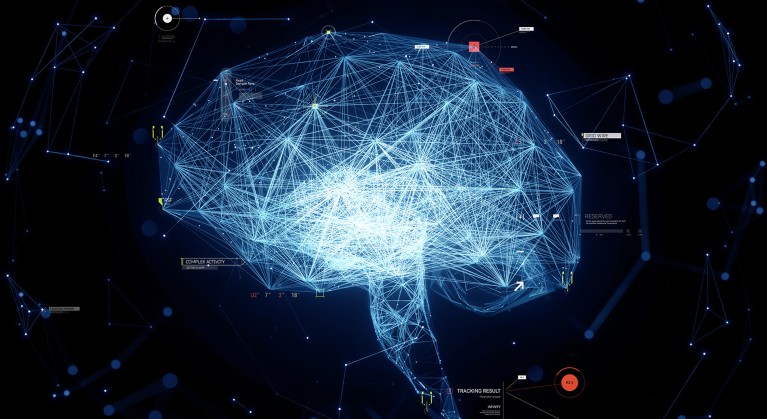Artificial intelligence can't do a damn bit of good until the research is out there that delivers recovery! Here is my attempt with ChatGPT, useless!
Here is my run through asking for 100% recovery from stroke:
ChatGPT on 100% recovery from stroke Nothing worthwhile!
How AI could help stroke survivors regain use of their limbs
When Junichi Ushiba was a young boy at Keio University’s elementary school in Tokyo, Japan, a talk on artificial intelligence (AI) from a graduate student set him on a path that would see him eventually design a brain-computer-interface-based (BCI) neurorehabilitation device for stroke survivors.
Already a keen computer programmer, it was when Ushiba was in high school that he learned about neural plasticity — the reconfiguring of neural pathways, or how the brain grows and changes, in response to stimuli such as learning or damage.
In particular, it was hearing about cases of people who have undergone a hemispherectomy — the removal of half of their brain — and almost fully recovered their ability to recognize things, as well as their sensory and motor functions, that really grabbed his attention.
The contrast with those who had undergone a stroke, such as his grandfather, was puzzling to him. “Stroke sufferers only have a small portion of structural damage, but can have severe motor and cognitive deficits,” says Ushiba, who is today a professor at Keio University’s Department of Biosciences and Informatics in Kanagawa, Japan.
A human approach
These early experiences led to Ushiba working at the junction of neuroscience and AI, with the aim of using a BCI and neurofeedback training to encourage the formation of new neural pathways for rehabilitation of stroke survivors.
“BCIs are a tool in neuroscience that connects the brain to external machines and brings out the brain’s flexibility to rewrite neural circuits — and AI is a new tool for discerning neural signals and operating BCIs to do this efficiently” he explains. “In this way, BCI research requires the pursuit of both neuroscience and AI at a high level, balancing the two to achieve the best mix.”
Ushiba set out to use BCIs in tandem with rehabilitation to encourage the formation of circuits in healthy parts of the brain that might allow a patient to better perform actions previously handled by damaged areas.
“But when I first began this research, doctors laughed at me,” Ushiba recalls. “In clinical practice, it was common knowledge that damaged brains could not recover.”
In 2008, however, Ushiba and his team at Keio University began to develop a handmade prototype BCI for rehabilitation of stroke survivors, focusing in particular on the problem of hemiplegia – paralysis on a single side of the body.
The device paired a wearable electroencephalogram (EEG) headset with a box that the patient’s paralysed arm rested upon. The box contained a servo motor that could move a platform supporting a finger upwards if a brain signal indicated they were attempting to move their finger.
“The device was very bulky and the box was made of aluminium. It was really cold when you put the participant’s arm on it,” Ushiba recalls, “So the mother of one of the students crafted a felt cover and put it on the box for the patients,” he says. “That was a very heartwarming memory for me.”

The brain has the ability to reconfigure neural circuits to recover functions previously handled by damaged areas.Credit: Andriy Onufriyenko/Moment/Getty
The team have subsequently refined the device, which now works wirelessly and includes an exoskeletal arm that envelops a patient’s limb instead of an uncomfortable aluminium box. Now, when neural activity bypassing the damaged area of the brain is detected, the exoskeletal arm is activated providing extension, bending and rotation exercises for a patient’s paralysed fingers. “We hope that by combining this BCI with appropriate rehabilitation, the compensatory circuit between brain and fingers will be activated, eventually allowing the patient to open their hand at will without the device,” says Ushiba.After several attempts at partnering with corporates to commercialize the technology, Ushiba decided in 2018 to instead set up a university-based start-up. The company, dubbed LIFESCAPES, focused on sales and development of these BCI devices. Their flagship BCI device is now certified as a medical device in Japan and is covered by the national insurance system. As yet, they have not applied for approval in any regions outside Japan.
Looking forward
Ushiba credits Keio University’s unique educational system, which can take the student all the way from elementary school to graduate school, with creating an environment that was instrumental to the realization of LIFESCAPES’ device. Seitaro Iwama, an assistant professor in Ushiba’s group, and Masaaki Hayashi, a chief strategy officer of LIFESCAPES, were students at Keio’s junior high school when they were inspired by a talk by Ushiba to study neuroscience – much as Ushiba himself had been inspired as a teenager. They both later graduated with PhDs from Ushiba’s lab. “They have now become valuable colleagues,” says Ushiba. Ushiba and his team are now exploring applications for the BCI device outside of stroke rehabilitation. Hayashi, for example, conducted a study in healthy individuals and demonstrated that, using EEG feedback, it was possible for the individual to control brain activity between both hemispheres of the brain1. Iwama is also looking into the use of BCIs to explore dextrous movements, such as playing the piano or touch typing2. There is also a possibility for the approach to be applied to human augmentation and sports science by improving motor performance.Ushiba sees BCIs as a technology that has great potential both clinically and for basic research. “My goal is to develop BCIs as a tool that draws out the potential of brain plasticity,” he says. “Paralysis is not the end. We want to provide possibilities for those who are paralysed and help each person live a fulfilling life.”
Find out more about LIFESCAPES and Ushiba's lab.
No comments:
Post a Comment